"There
was no lack of color rising from living things -- but it
is only that the eye beholds too much in this land that
has no roof and no containing walls. The colors flow together
and are lost in distance that the eye cannot embrace.”
—Farley
Mowat
The
Arctic Wildlife Refuge is to Alaska what the Serengeti is to Tanzania,
a wildlife refuge of the first magnitude— a vast 19 million-acre
preserve of nameless, mountains that slope into the coastal plain
of the Arctic Ocean. Our caribou are the analogs of the wildebeest
of East Africa, with parallel analogs of grizzlies and lions,
gray wolves and leopards, muskoxen and Cape buffalo, arctic foxes
and jackals. A land of enormous geometry etched by the cutting
edge of light
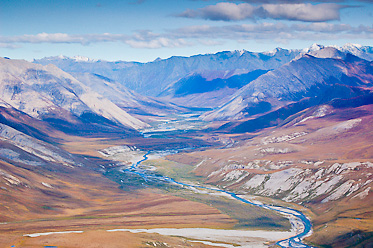 Our trip begins with a 300-mile flight across the tundra, ponds, and the Yukon River Flats to the Gwich’in Native settlement of Arctic Village. We then transfer to our bush planes and fly over the Eastern Brooks Range
to the upper reaches of the Marsh Fork of the Canning. As
we enter the Canning drainage by wheel-plane, a carpet of tundra
spreads before us like a mirage in the late summer-autumn of mid August. Nature's cycles of the day, year, and century seem
undisturbed. The days are sixteen hours long, and the sun takes
four hours to set. Meanwhile, it casts a brilliant gold on the
willows, and makes a low, horseshoe curve above the horizon. The
tundra, with its sedge tussocks, reindeer moss, low-bush cranberries,
lichens, dwarf birch, and net leaf willow, is a miniature Japanese garden
growing on thin soils above the permafrost.
Our trip begins with a 300-mile flight across the tundra, ponds, and the Yukon River Flats to the Gwich’in Native settlement of Arctic Village. We then transfer to our bush planes and fly over the Eastern Brooks Range
to the upper reaches of the Marsh Fork of the Canning. As
we enter the Canning drainage by wheel-plane, a carpet of tundra
spreads before us like a mirage in the late summer-autumn of mid August. Nature's cycles of the day, year, and century seem
undisturbed. The days are sixteen hours long, and the sun takes
four hours to set. Meanwhile, it casts a brilliant gold on the
willows, and makes a low, horseshoe curve above the horizon. The
tundra, with its sedge tussocks, reindeer moss, low-bush cranberries,
lichens, dwarf birch, and net leaf willow, is a miniature Japanese garden
growing on thin soils above the permafrost.
Implacable,
raw, elemental, beautiful, and remote from human influence this
region is host every summer to the calving and migration of 175,000
caribou from the Porcupine herd. Each year, this enormous herd travels from the more protected
forested areas to the south, northward to their traditional calving
grounds along the coastal plains of the Wildlife Refuge. Although our group will be arriving on the scene past the time of the great migration (a hit or miss proposition), we will
still see small bands of caribou dotting the tundra.
The
Brooks Range
Stretching in a six-hundred-mile long scimitar from
the Canadian border on the east to the Bering Sea on the west,
across the top of Alaska, the Brooks Range is the northernmost
major mountain range in the world. It is an area that wilderness
aficionados consider to be the greatest
remaining wilderness area
in
North America, and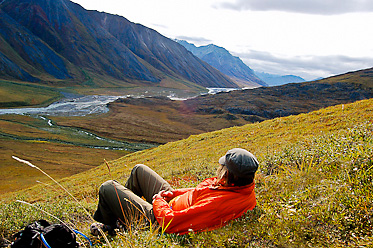
perhaps the world.
The Arctic National Wildlife Refuge lies in the most eastward
and rugged part of the range. The mountain range is 150 miles
wide and acts as the major barrier between the taiga (spruce)
forests of the south and the treeless expanse of mountains, foothills
and coastal plains to the north.
This
is a land of bewitching beauty. Here, all creatures are present,
the chorus is complete, the web of life hums, fully intact and
in perfect balance. This land is North America's primordial heartbeat.
Once there was a Serengeti West filled with the herds of buffalo
of the Great Plains. Now, there is only the Arctic Serengeti,
a place which resounds with the pounding of "wild hooves
and the cries of wind and wolf, beating steady and true against
the efforts to still it."
|
|
"On
a mud bar I passed a line of unusually large wolf tracks.
Eventually they met and mingled with caribou tracks laid down
about the same time. An encounter? What a free-ranging life
for both wolf and caribou here! Both animals need broad stretches
of wilderness to survive-as once did the bison and plains
wolf of our long-lost frontier. I hope that man has the vision
to keep his civilization from at least a few such wilderness
as this-wilderness on the old, vast scale-so that wolf and
caribou may continue to live as they always have; for their
own sake, not ours. And if this wildness also can be an incidental
reservoir for restoring man's spirit, then fine. But that
is not the purpose of this place. Its purpose is to be. Man's
role should be . . . let it be." |
|
|
|
—John
P. Milton |
|
Itinerary
Day
0-Aug 6: Hometown-Fairbanks
Day in transit from hometown to Fairbanks. Overnight
in hotel.
Day 1-Aug 7: Fairbanks - Arctic Village - Marsh Fork and Main Forks of the Canning River
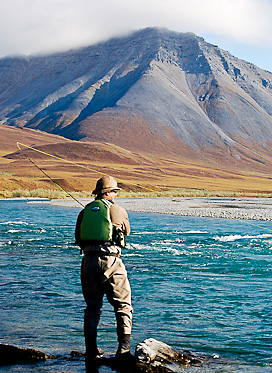
In the AM we will fly to Arctic Village on charter
flight. Once
in Arctic Village, we will transfer our gear to our bush planes
and fly over the Romanzof Mountains to the upper Marsh Fork of the Canning River.
Our camp will be just North of the Arctic Divide. In the headwaters, we will spend time hiking, photographing, and fishing in an area of huge peaks, glaciers, and spectacular views before descending downstream.
As
we peer around us, we'll find that there is plenty of color to
be discovered. Lichens are splashed against the rocks. Close to
the earth miniature Japanese gardens of sweet pea, milk vetch,
forget-me-nots, lupines, wooly louseworts, Lapland rosebay, anemones,
saxifrage, bluebells, and asters-all spring into life during the
short-lived summer.
Days
2-11; Aug 8-Aug 18: Rafting, Hiking, and Fishing the Marsh Fork and Main Fork of the Canning River
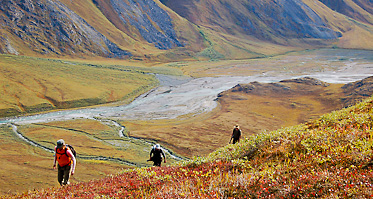 The Marsh Fork is shallow and braided and cuts through a series of rugged limestone canyons of uplifted ancient seabeds. The small bouncy rapids in this upper section are all Class II-III and provide some challenging moments. When we conflue with the Main Fork of the Canning,
The Marsh Fork is shallow and braided and cuts through a series of rugged limestone canyons of uplifted ancient seabeds. The small bouncy rapids in this upper section are all Class II-III and provide some challenging moments. When we conflue with the Main Fork of the Canning,
the valley opens up and
becomes U-shaped and the scenery more expansive. As we paddle through the foothills and slowly leave the mountains behind,
we enter the vast coastal plain replete with wildlife and multi-colored tundra.
Since we have an abundance of light each day, our schedule
will be leisurely and flexible. After paddling each day on this
swift river, we'll take extraordinary rambles in search of the
denizens of the landscape: the caribou, other Arctic mammals,
birdlife, and wildflowers. The scenery is spectacular and the
river valley provides countless possiblilites for hiking to the
high ridges. En route, we will have opportunities to fish for
arctic char and grayling.
Since
one of our goals is the observation and photographing of wildlife,
we will take advantage of our 1/2 day and full layover days to saunter over the landscape to avail ourselves
of wildlife-viewing possibilities.
The most exciting rapids are found in the upper reaches of the river including running a narrow gorge of Class III (intermediate) rapids.
Day
12-Aug 19: River Takeout - Arctic Village - Fairbanks
 Our river journey ends only a few miles from the Arctic Ocean, at the last patch of tundra a plane can use as a landing strip. We'll either fly back to Arctic Village or directly back to Fairbanks.
Our river journey ends only a few miles from the Arctic Ocean, at the last patch of tundra a plane can use as a landing strip. We'll either fly back to Arctic Village or directly back to Fairbanks.
We'll return to our hotel then go out for a "no host dinner" to celebrate
our successful expedition to the high Arctic.
Day After Trip-Aug 20: Fairbanks to Hometown
For a more comprehensive trip itinerary with images and additional
information about this departure, please go to our Expanded Itinerary and Trip Details.
To read more about our Special-Interest Trips on this river, go
to Marsh Fork of the Canning Special Trips.
How well named this place is:
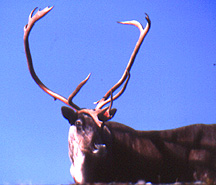 Arctic— Located
less than fourteen hundred miles from the North Pole.
Arctic— Located
less than fourteen hundred miles from the North Pole.
National— It's our land, not
Chevron's or British Petroleum's, not even Alaska's.
Wildlife— A stirring roll call:
caribou, barren ground grizzly, wolverine, wolf, muskox, gyrfalcon, snowy owl,
lesser snow goose, tundra swan.
Refuge— Haven. A place for
birds and animals from throughout the Western Hemisphere to call
their own.
Conservation Issues
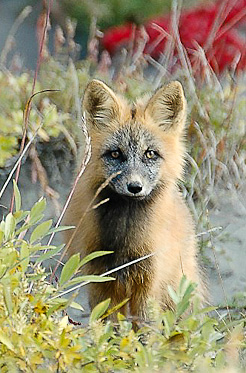
This trip is one for experiencing a remarkable wilderness
area and storing the memories for protections's sake. The threat
is a hunger for what fuels this modern age-oil. This is the time-worn
story of oil versus wilderness. "But rarely have the lines
of discord been drawn with greater exactitude, rarely have the
stakes been so high, and never has conflict erupted in a landscape
more powerful than the fragile magnificence that lies at the top
of the world. The oil seekers would like to move east from Prudhoe
Bay and punch a lot of holes and see what they can find beneath
the tundra and the permafrost of the Coastal Plain.
Conservationists,
on the other hand, would like to keep those oil riggers and drillers
out. They think the Coastal Plain, like the mountains, is apart
of a whole, unique and irreplaceable, essential to the natural
coherence of one of the last great untouched ecosystems left anywhere
on earth. They think that to tap into this place-even if the oil
is there would be to damage it beyond redemption."
(See Other
Resources.)
©2011. All Rights Reserved. Revised March, 2022.
James Henry River Journeys.
Photos by ©Tom Meckfessel
Caribou photo: ©James Katz

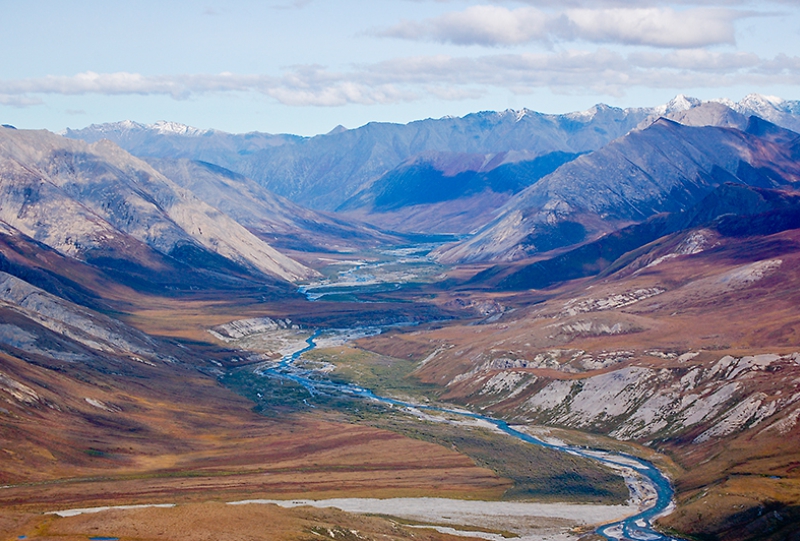
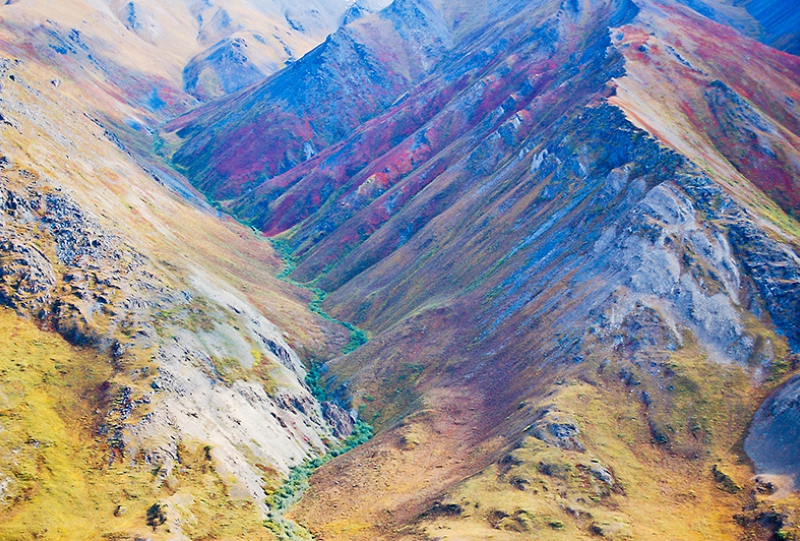
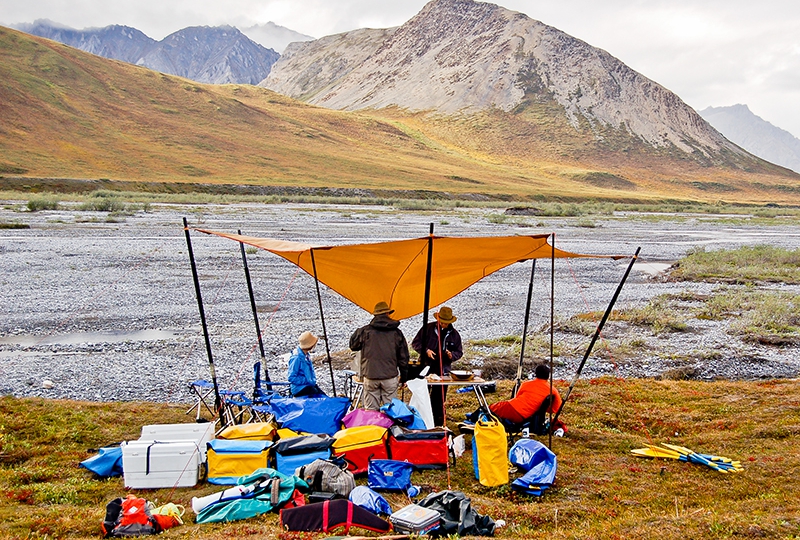
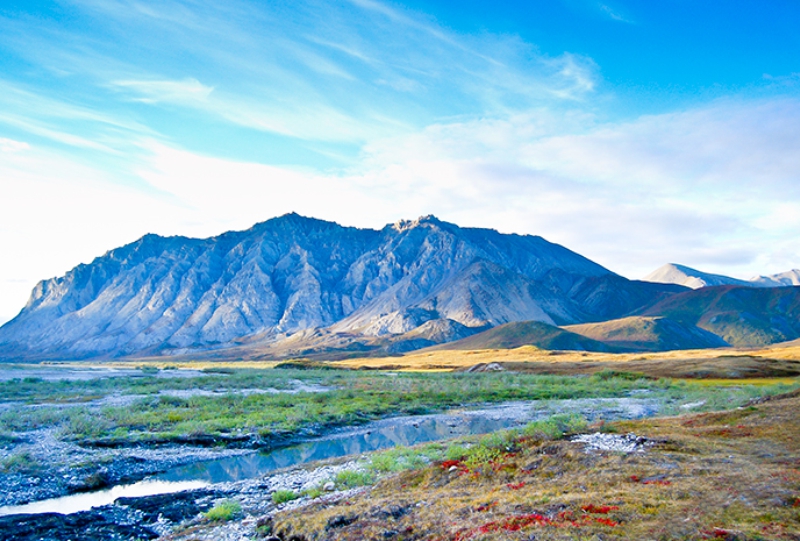
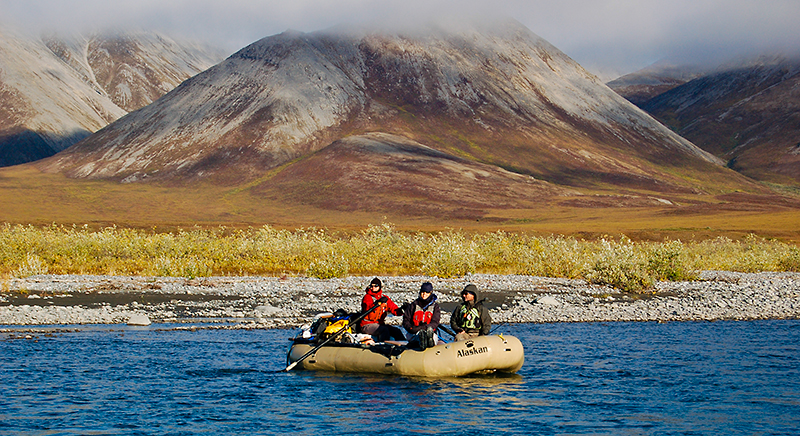
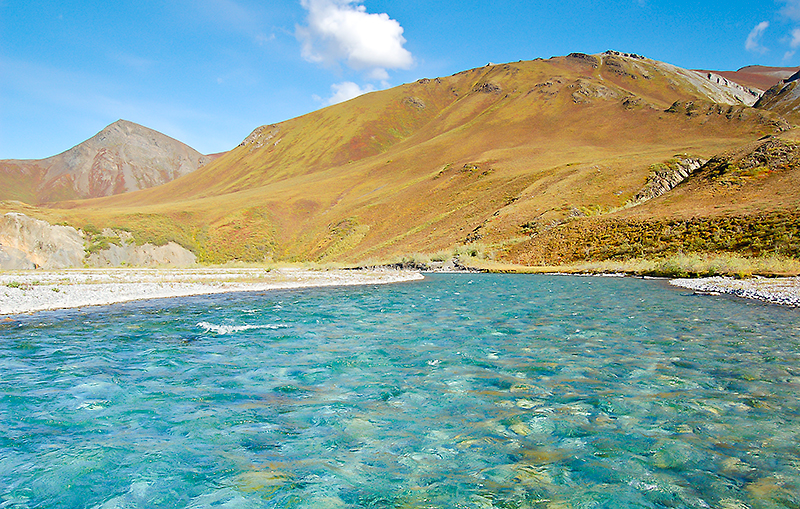
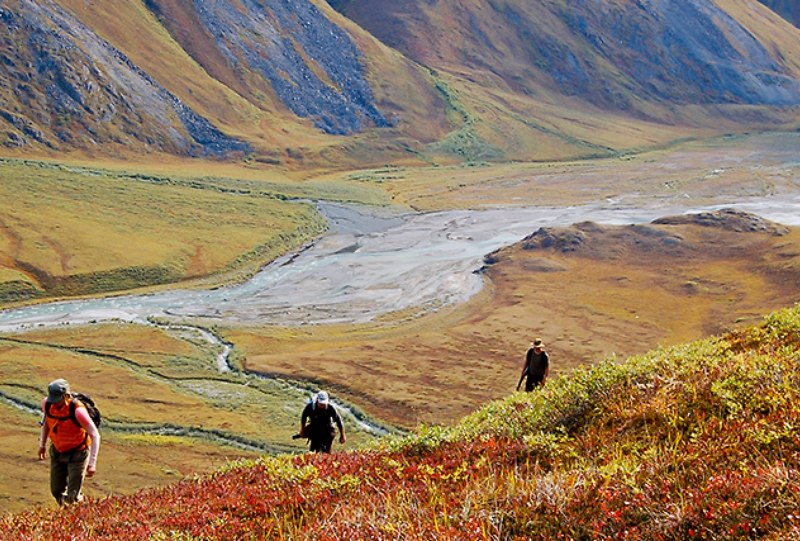
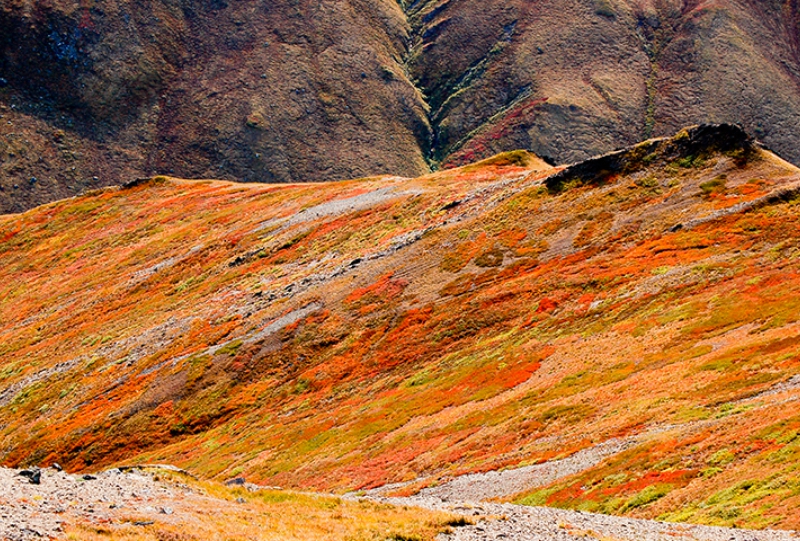
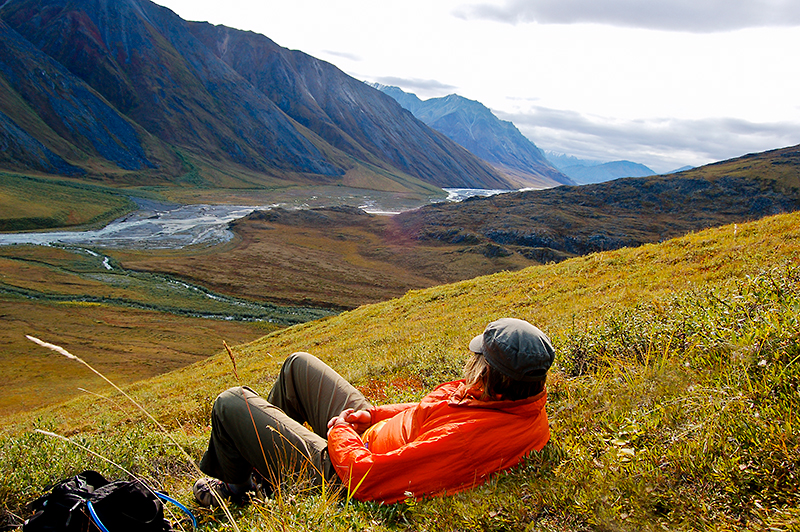
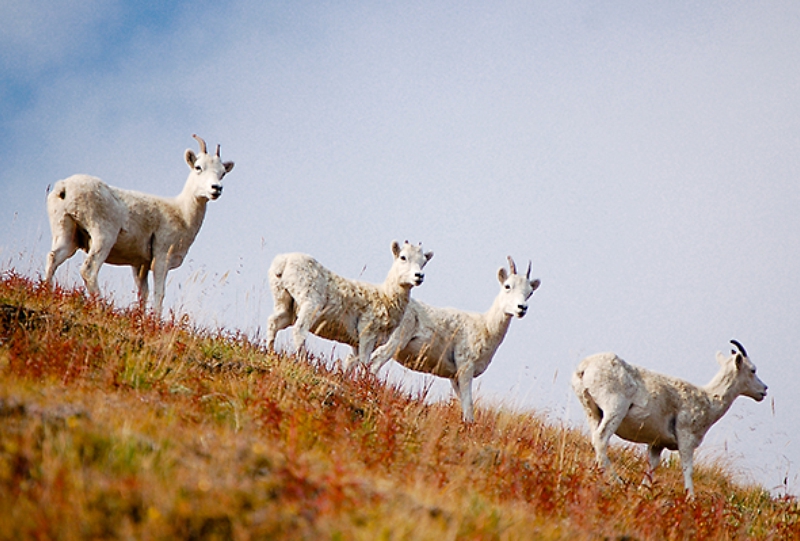
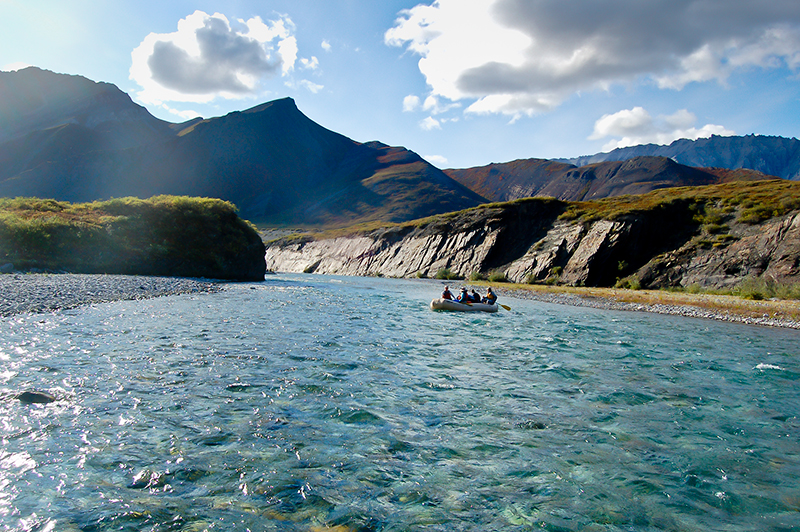
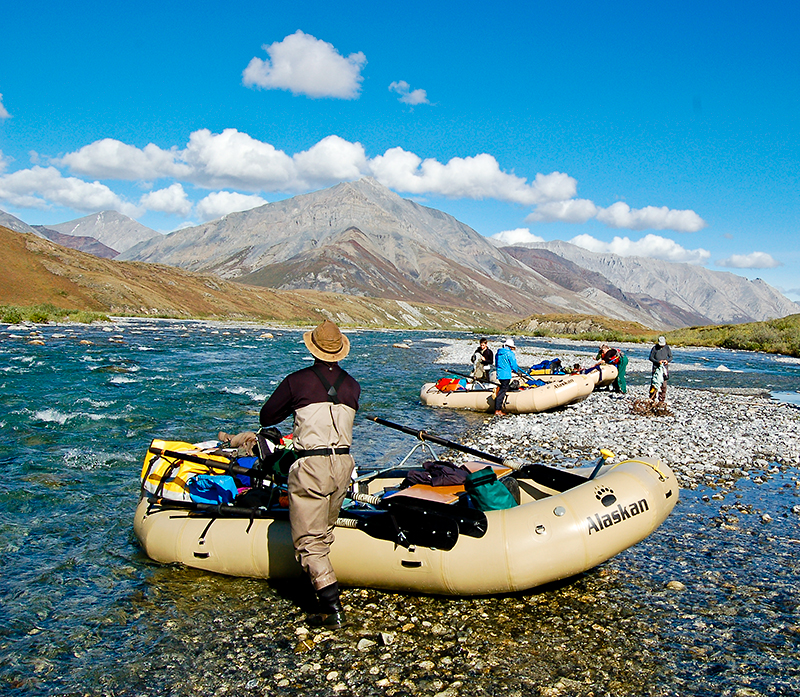
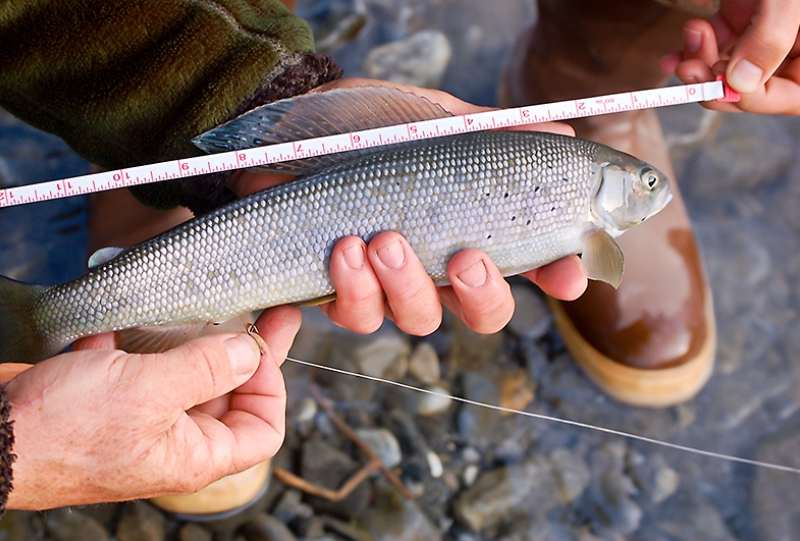
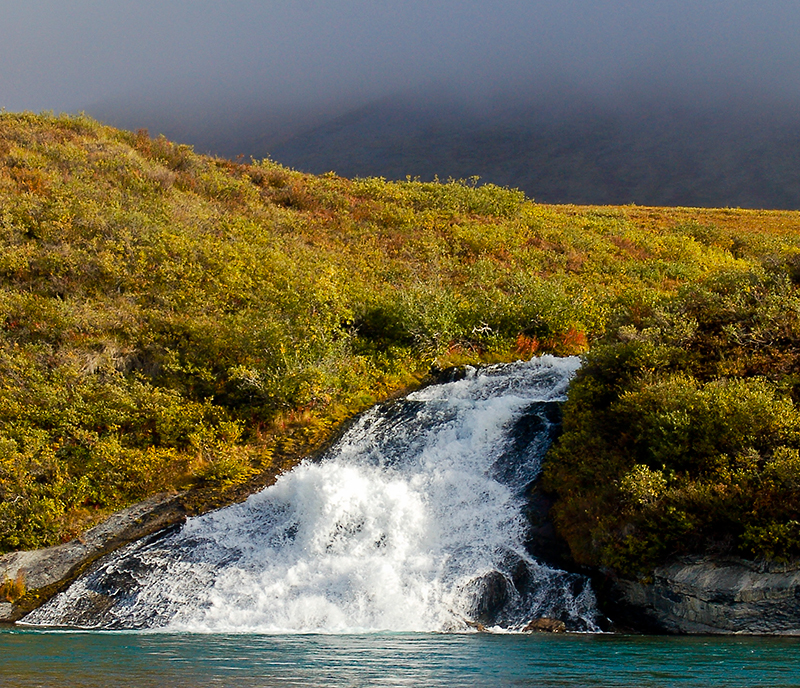
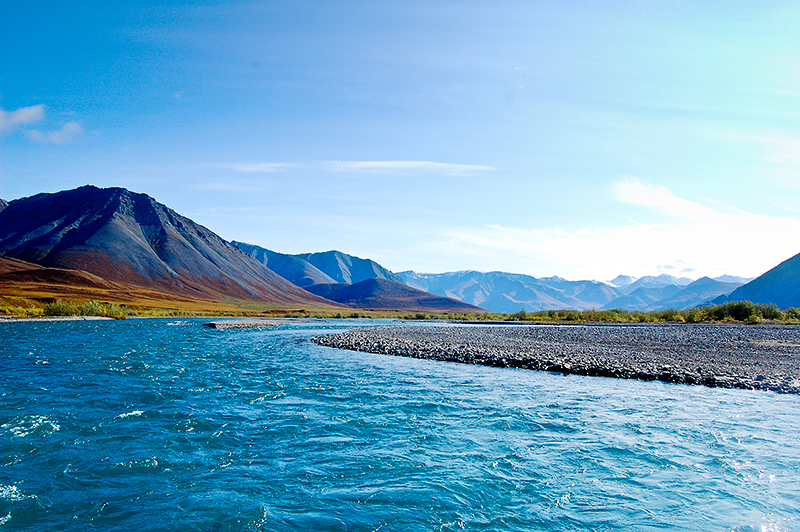
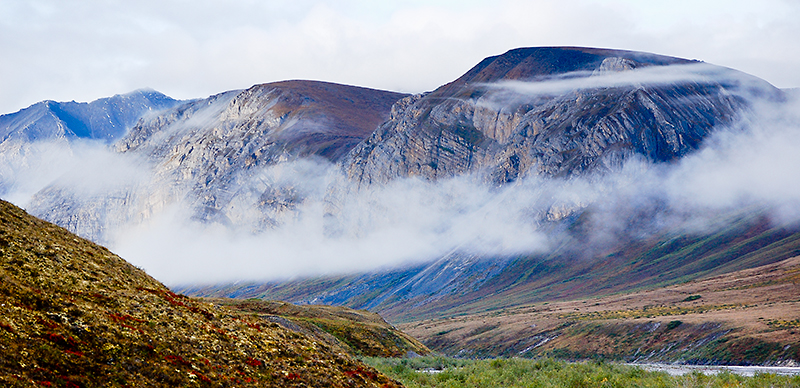
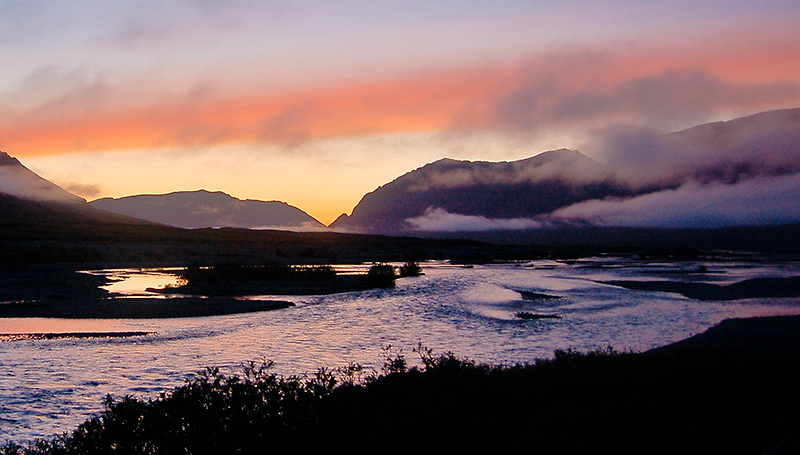

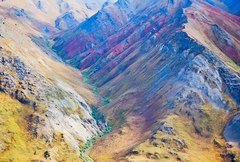
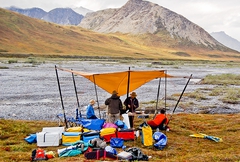
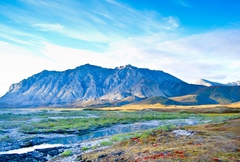


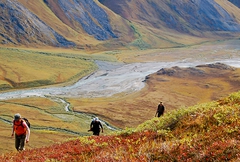
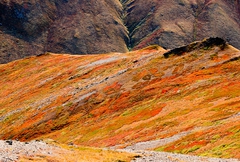

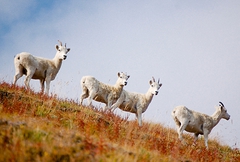


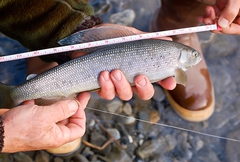




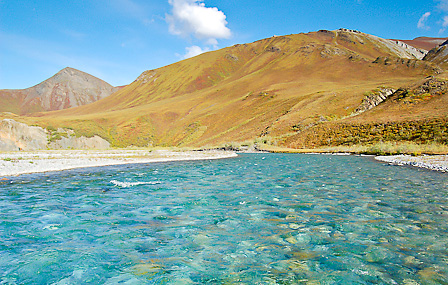
 Our trip begins with a 300-mile flight across the tundra, ponds, and the Yukon River Flats to the Gwich’in Native settlement of Arctic Village. We then transfer to our bush planes and fly over the Eastern Brooks Range
to the upper reaches of the Marsh Fork of the Canning. As
we enter the Canning drainage by wheel-plane, a carpet of tundra
spreads before us like a mirage in the late summer-autumn of mid August. Nature's cycles of the day, year, and century seem
undisturbed. The days are sixteen hours long, and the sun takes
four hours to set. Meanwhile, it casts a brilliant gold on the
willows, and makes a low, horseshoe curve above the horizon. The
tundra, with its sedge tussocks, reindeer moss, low-bush cranberries,
lichens, dwarf birch, and net leaf willow, is a miniature Japanese garden
growing on thin soils above the permafrost.
Our trip begins with a 300-mile flight across the tundra, ponds, and the Yukon River Flats to the Gwich’in Native settlement of Arctic Village. We then transfer to our bush planes and fly over the Eastern Brooks Range
to the upper reaches of the Marsh Fork of the Canning. As
we enter the Canning drainage by wheel-plane, a carpet of tundra
spreads before us like a mirage in the late summer-autumn of mid August. Nature's cycles of the day, year, and century seem
undisturbed. The days are sixteen hours long, and the sun takes
four hours to set. Meanwhile, it casts a brilliant gold on the
willows, and makes a low, horseshoe curve above the horizon. The
tundra, with its sedge tussocks, reindeer moss, low-bush cranberries,
lichens, dwarf birch, and net leaf willow, is a miniature Japanese garden
growing on thin soils above the permafrost. 

 The Marsh Fork is shallow and braided and cuts through a series of rugged limestone canyons of uplifted ancient seabeds. The small bouncy rapids in this upper section are all Class II-III and provide some challenging moments. When we conflue with the Main Fork of the Canning,
The Marsh Fork is shallow and braided and cuts through a series of rugged limestone canyons of uplifted ancient seabeds. The small bouncy rapids in this upper section are all Class II-III and provide some challenging moments. When we conflue with the Main Fork of the Canning, Our river journey ends only a few miles from the Arctic Ocean, at the last patch of tundra a plane can use as a landing strip. We'll either fly back to Arctic Village or directly back to Fairbanks.
Our river journey ends only a few miles from the Arctic Ocean, at the last patch of tundra a plane can use as a landing strip. We'll either fly back to Arctic Village or directly back to Fairbanks.  Arctic— Located
less than fourteen hundred miles from the North Pole.
Arctic— Located
less than fourteen hundred miles from the North Pole.